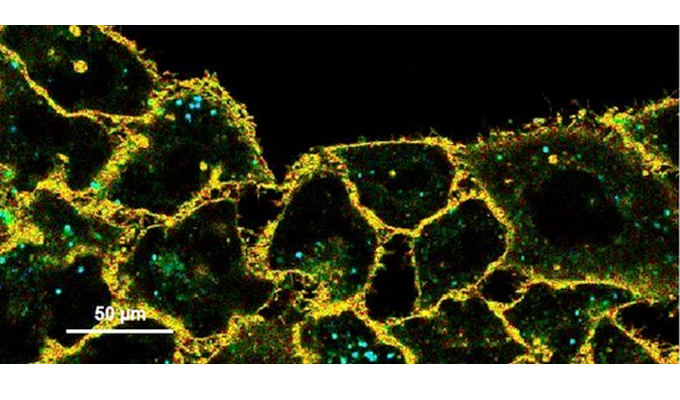The absence of mature oligodendrocytes for the repair of demyelination lesions is a critical factor in the pathology of Multiple Sclerosis (MS), and other debilitating CNS disorders of myelination. As such, regulating the maturation of oligodendrocytes and the resulting myelin production is an interesting target for potential new therapeutics.
GPR17 is an orphan G-protein-coupled receptor (GPCR) that is abundant in the CNS, and has been shown to play a key role in regulating oligodendrocyte differentiation and maturation. Unfortunately, little has been known about the exact mechanism through which GPR17 influences myelination.
Small molecule activator of GPR17: MDL29,951
MDL29,951 is a new, highly specific, small molecule activator of GPR17 (1) that has been shown to be active in intact cells (1). The ability to specifically activate GPR17 allows for the study of the exact role GPR17 plays in the maturation of oligodendrocytes and facilitates further study of this important process.
10-4537 5 mg, 25 mg
GPR17 antagonist : Pranlukast
Pranlukast is a GPR17 antagonist and a CysLT1 antagonist (1,3).
10-2441 5 mg, 25 mg
Muscarinic receptors antagonist: Benztropine Mesylate
Benztropine has been shown to decrease the clinical severity of relapsing-remitting multiple sclerosis in an experimental autoimmune encephalomyelitis (EAE) model. The efficacy of the drug resulted directly from enhancement of remyelination. The mechanism of action is believed to involve direct antagonism of M1 and/or M3 muscarinic receptors (4).
10-2324 1 g
GPR17 and CysLT1 antagonist: Montelukast Na
Montelukast works similarly to Pranlukast and is a GPR17 antagonist and a CysLT1 antagonist.
10-2597 50 mg, 250 mg
References
- Hennen et al. (2013) Decoding Signaling and Function of the Orphan Protein-Coupled Receptor GPR17 with a Small Molecule Agonist; Sci. Signal., 6 ra93
- Lecca et al. (2008) The recently identified P2Y-like receptor GPR17 is a sensor of brain damage and a new target for brain repair; PLoS One, 3 e3579
- Ciana et al. (2006) The orphan receptor GPR17 identified as a new dual uracil nucleotides/cyteinyl-leukotrienes receptor; EMBO J., 25 4615
- Deshmukh et al. (2013) A regenerative approach to the treatment of multiple sclerosis; Nature, 502 327






